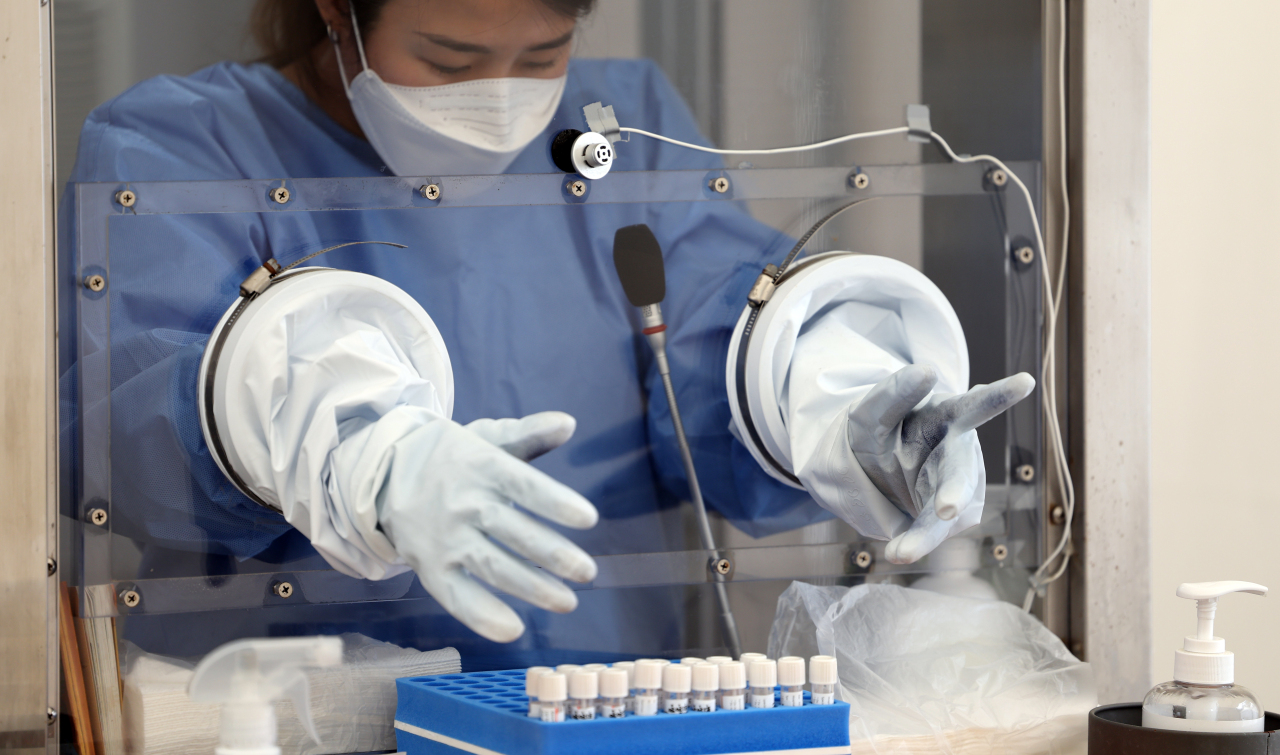 |
A health care worker prepares COVID-19 tests at a testing station in central Seoul. (Yonhap) |
The South Korean government said Monday that it would stop operating clinics for mild COVID-19 cases and introduce a fast-track process for at-risk groups.
The government said it has decided to close down all local clinics that have temporarily been used for mild COVID-19 cases due to their low operation rate, as well as to prevent the government’s health expenditures from going to waste.
Starting Tuesday, 12 clinics, along with some 3,400 hospital beds, will stop their operations, according to the government.
While reducing medical facilities for mild COVID-19 cases, the government will take special care of high-risk groups for COVID-19, who currently account for more than 90 percent of associated deaths.
From next month, high-risk groups for COVID-19 will be able to receive both COVID-19 tests and treatment within one day, under the government’s new fast-track measure.
The high-risk groups will include people who are aged 60 and above, those with a weak immune system and people from facilities that are vulnerable to COVID-19 infections, such as in-patient rehabilitation and medical treatment centers.
For COVID-19 tests, both rapid antigen tests and polymerase chain reaction tests will be used. Those people who test positive and show symptoms for COVID-19 will receive oral antiviral pills on the same day of their diagnosis.
The government’s decision to make changes in the COVID-19 response comes after the National Health Insurance Service’s deficit in the first quarter of this year.
During the January-April period, the NHIS’ earnings increased to 25.29 trillion won ($20.4 billion), up 8.3 percent on-year. But, its expenses also spiked to 27.14 trillion won, up 11.7 percent on-year, resulting in a deficit of 1.7 trillion won.
Due to the deficit, the NHIS’ reserves also came down to 18.54 trillion won from 20.24 trillion won at the end of last year.
The NHIS’ expenses this year went sharply up mainly due to increased demand for rapid antigen tests earlier this year when the omicron wave gripped the country.
Between Feb. 3 and April 3, the government covered part of the costs that people paid for the rapid tests, with the combined insurance paid out for them in the period notching 1.1 trillion won.
An additional 900 billion won in insurance was spent to cover expenses of COVID-19 patients who were under at-home treatment, according to the government.
The extra spending of the NHIS this year could cause potential increases in health insurance costs next year.
By Shim Woo-hyun (
ws@heraldcorp.com)




![[Herald Interview] 'Trump will use tariffs as first line of defense for American manufacturing'](http://res.heraldm.com/phpwas/restmb_idxmake.php?idx=644&simg=/content/image/2024/11/26/20241126050017_0.jpg)

![[Health and care] Getting cancer young: Why cancer isn’t just an older person’s battle](http://res.heraldm.com/phpwas/restmb_idxmake.php?idx=644&simg=/content/image/2024/11/26/20241126050043_0.jpg)

